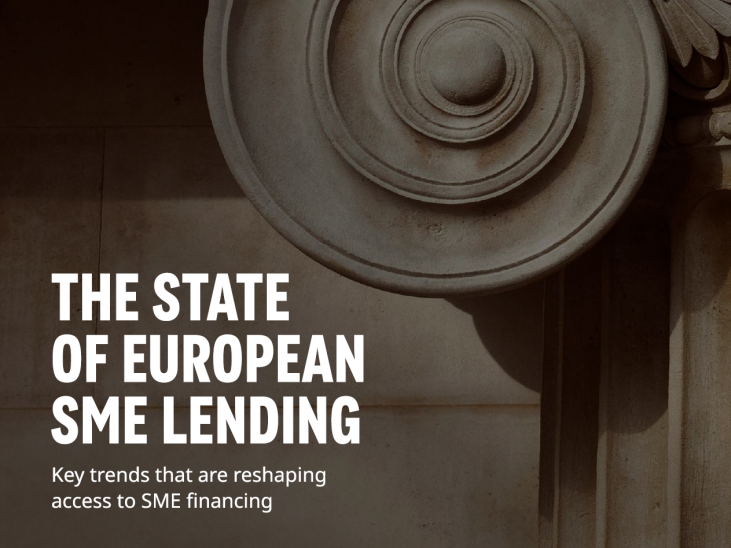What can be learned from the FTX collapse?

Douwe Lycklama, founding partner at INNOPAY, formulates a lucid analysis of the context that led to the FTX collapse, while detailing the important lessons that the crypto and broader economic markets should learn and act on in the future.
The FTX collapse is the latest in a line of crypto failures in 2022 and the biggest so far, with billions missing and 1.2 million account holders turned into creditors. It will take years to settle this bankruptcy and the clients’ outlook for recovery is bleak. We are unlikely to see a similar scenario as with MtGox, which went bust in 2014. The Bitcoin that remained there appreciated in fiat value during the bankruptcy to such an extent that creditors can soon expect to be paid out handsomely in fiat, making up for the fiat value of their holdings back in 1994. FTX probably doesn’t have such a ‘nest egg’ as its assets were largely self-created tokens or lost during trading operations. The initial reports are unsettling.
In the case of FTX, customer deposits were used for speculation on the account of FTX’s sister company, trading firm Alameda. This is a banking practice from the 1920s. It was prohibited by the 1933 Glass Steagall Act which forbade banks to use customer funds for own speculation. However, the act was repealed in 1999 and this is often associated with the global financial crisis of 2008.
Then there was FTX-leveraged trading, using self-issued tokens as weak collateral. The self-issued tokens were ‘mark to market’ by trading a small amount publicly and using that price for the whole stock of tokens. This also pumped up the balance sheet, easily misleading high-profile investors who – due to fear of missing out (‘FOMO’) – were queuing up for the latest FTX investment round with a valuation of USD 30 billion. Hardly any due diligence took place. FTX’s spectacular growth numbers and high-profile marketing campaigns (including Super Bowl ads) mesmerised investors, regulators and the general public.
Amazingly, there was no oversight board. But even more astonishing was the absence of basic financial and operational controls, which John Ray exposed within a few days of becoming FTX’s bankruptcy CEO. For example, three FTX board members had huge personal loans with their company (approx. USD 1.5 billion in total). He had never seen anything like this in his 40-year career as a bankruptcy specialist – not even while working on the high-profile scandal, fraud and subsequent bankruptcy of energy conglomerate Enron at the end of 2001.
Political donations also seem to be part of the FTX fact mix. Sam Bankman-Fried and other wealthy FTX executives donated at least USD 40 million to the Democrats’ election campaign and possibly also to the republicans. More dubious facts will no doubt emerge in the coming years. For now, it is more than clear that FTX was a scam, with crypto as conduit.
How could this happen? The broader regulatory context
There is no definite answer for now. However, there are some explanatory facts. FTX was based in the Bahamas with a US professional subsidiary, while mass marketing its services globally. Regulators have a habit of focusing their energy on companies located domestically because coordinating with regulators globally can be a murky affair, certainly when new topics such as crypto are involved.
From the Bahamas, FTX was actively marketing its services in the US, yet US citizens could not officially buy on the platform. VPNs probably helped out there, and it would be interesting to know just how many US customers there were in reality. For sure, heavy marketing made investors, politicians, regulators and the public feel that FTX was trustworthy. In the space of three years, FTX became the world’s third-largest crypto service provider after Binance and Coinbase.
FTX did not seem to face heavy regulatory scrutiny. Although the regulator in the Bahamas eventually pushed back on this sentiment, it was too little, too late. There was a complete lack of operational oversight. FTX was able to offer services (e.g. certain derivatives) for which US-based crypto providers were constrained by their regulator. It was not a level playing field.
Learnings and opportunities
So how could this have been prevented? The answer is actually not so complicated, because the very basic hygiene factors of operational management were not attended to. The basics apply for every company, but especially for financial institutions. Such a large-scale business failure is not specific to crypto and not specific to regulators. FTX probably completely outpaced the regulators’ ability and willingness to act, partly because they were lured into believing that FTX’s intentions were bona fide. Moreover, Alameda probably fell under other jurisdictions, as it is headquartered in Hong Kong despite being heavily financially intertwined with FTX.
In traditional finance, international coordination has taken shape through international bodies such as the BIS’s Financial Stability Board, OECD and IMF. For crypto, this has been in the works for a decade and there have been numerous papers and conferences. Nowadays, the KYC/AML part is well aligned with global AML provisions. Recently, both IMF and FSB published new consultation papers and it appears that convergence and clarity are near. Regulators want to apply the same rules for crypto as for fiat as much as possible, which makes sense as many of the risks (operational, legal, sanctions, KYC, etc.) are similar to the ones associated with traditional financial services. At the same time, crypto has some other characteristics (e.g. transparency of blockchains, bearer instruments, smart contracts, no middlemen, user control of data) which may require different or perhaps even less regulation. After all, less human intervention is involved in decentralised finance (DeFi) versions of lending, exchange and payments.
Time and time again, centralised entities led by humans prove to be prone to FTX-like ‘accidents’. Greed, egos and animal spirits are often in play as well. Over the past ten years, crypto has evolved from being purely decentralised (upon the advent of Bitcoin) to various shades of centralisation in which a limited group of people call the shots around the protocols, coins and organisation. Despite the incidental implosion of centralised companies such as FTX, Celsius and Three Arrows Capital, the underlying decentralised services and protocols have been shown to keep on working. Once a smart contract is deployed in an irreversible way, the risk tends to be technological rather than human.
The specific properties of blockchains offer unprecedented possibilities for transparency for users and authorities alike. Assets and liabilities could be followed in real time ‘on the chain’ instead of producing quarterly or yearly reports for regulators. This creates a true RegTech opportunity in which innovators and regulators could – and should – work hand in hand.
At the same time, the public and the authorities need to become more aware and informed about the opportunities and caveats of the peculiarities of crypto and decentralised infrastructures. Additionally, the public must wise up to the dangers of dealing with centralised entities in general. These risks are not exclusive to crypto because traditional entities can present similar risks, but these are better controlled. Crypto will catch up again eventually, but not before a prolonged ‘barren’ period in which the sector must carefully rebuild trust. To achieve this, the sector players must join forces more strongly to educate themselves, regulators, politicians and the general public.
For sure, crypto assets have suffered another huge setback in terms of image and trust in 2022. But let’s not forget that the underlying infrastructure itself proved to function well and should therefore be regarded as a separate topic. In this area, innovation will continue to advance as stablecoins and possibly CBDCs will become new carriers of fiat value. End-users will not perceive much of this behind-the-scenes innovation, just as telecom users were largely unaware of the VOIP revolution of the early 2000s, which ultimately resulted in ‘more for less’. In payments and financial services, we may discover a similar development in the decade ahead. And although the innovative future is bright, we have probably not seen the last bump in the road yet…
This article was originally published in The Paypers




